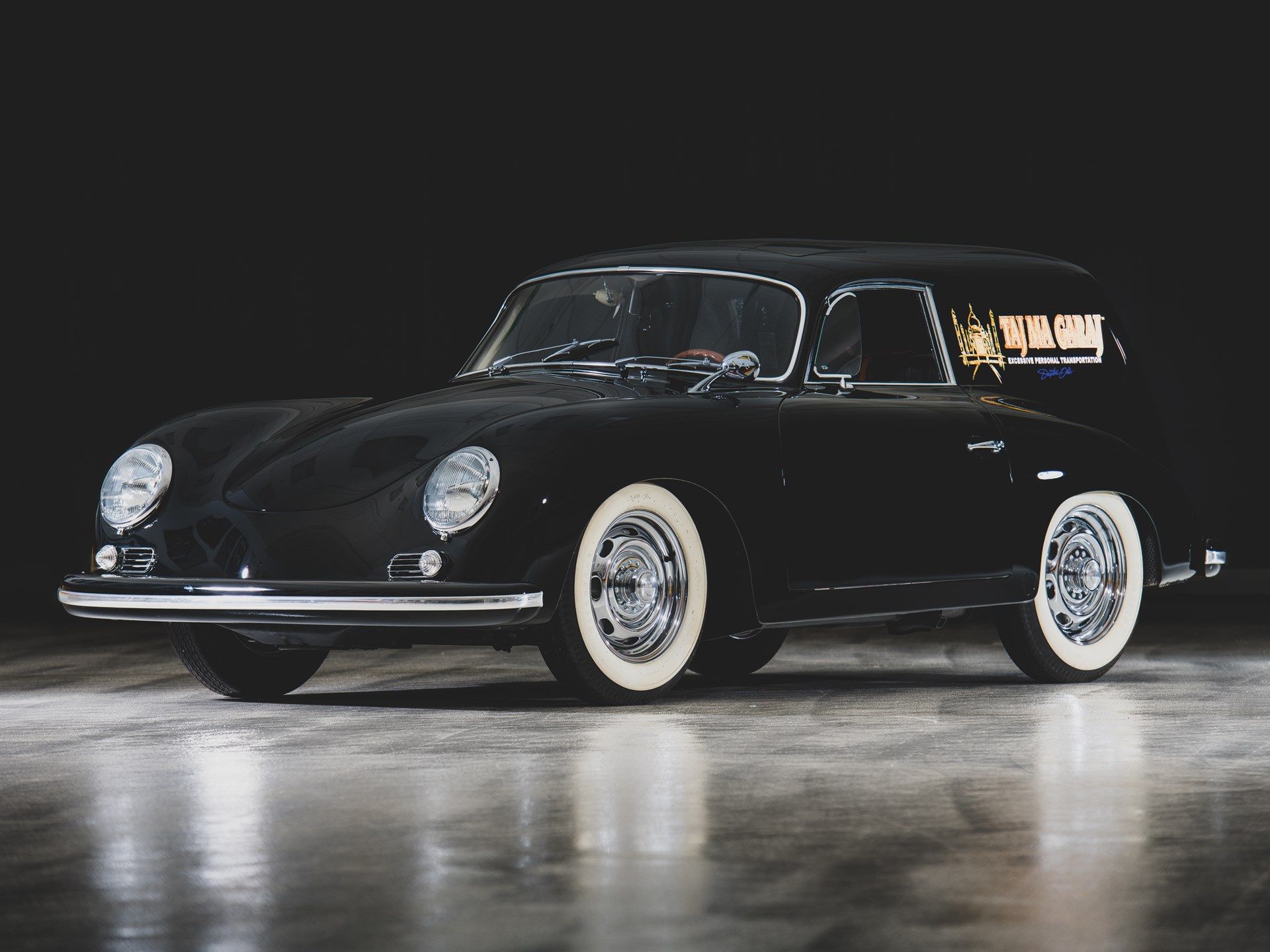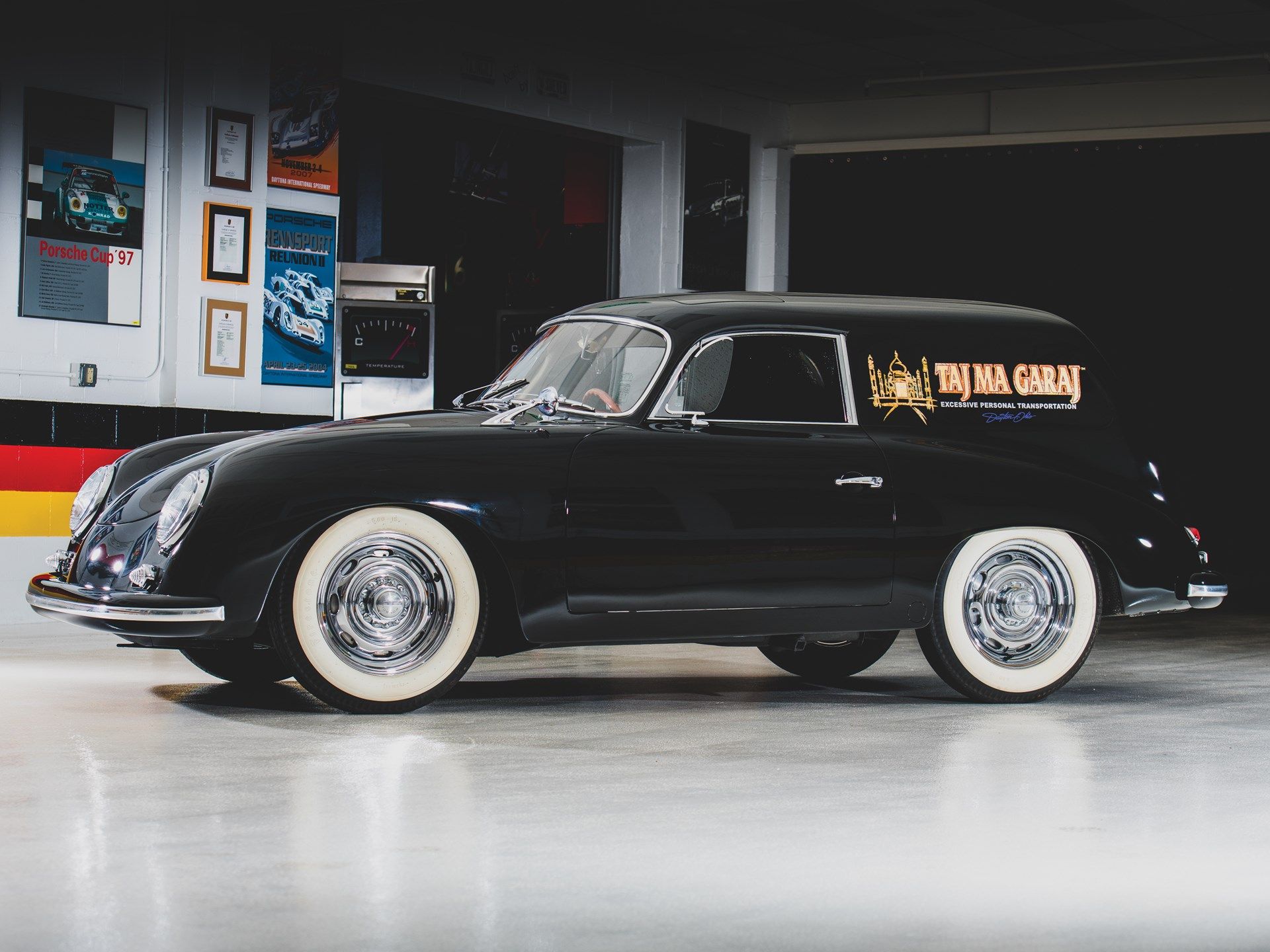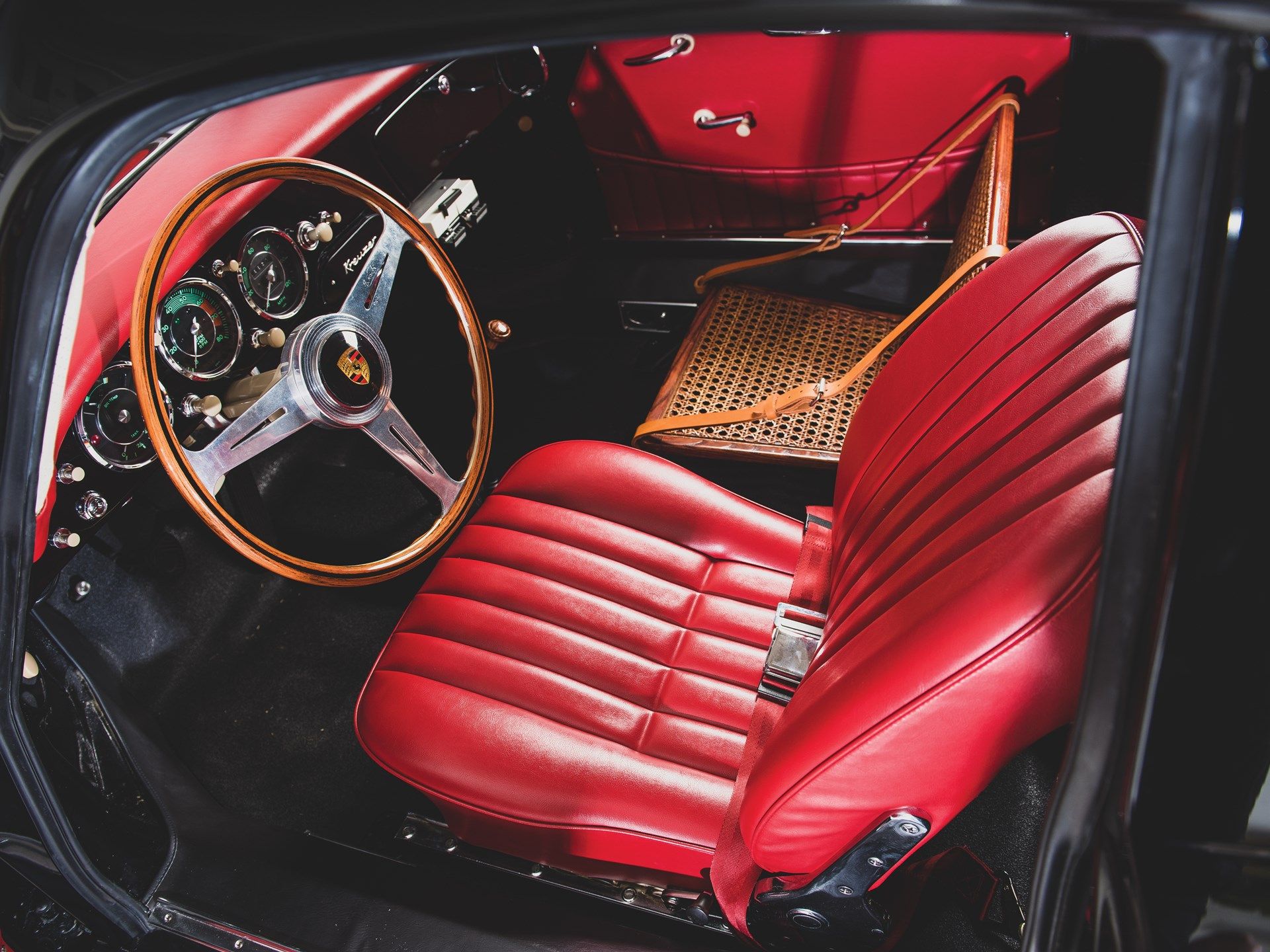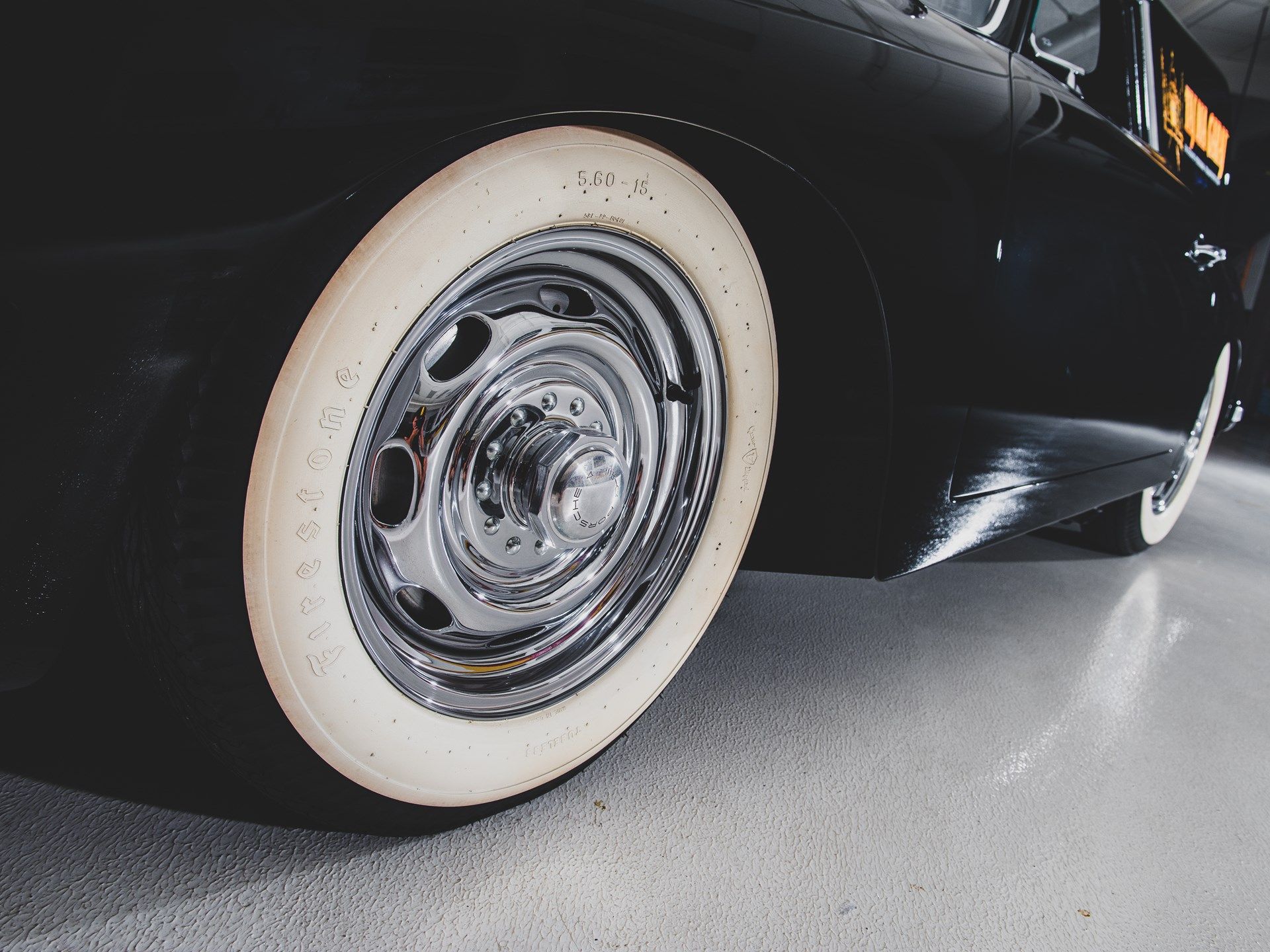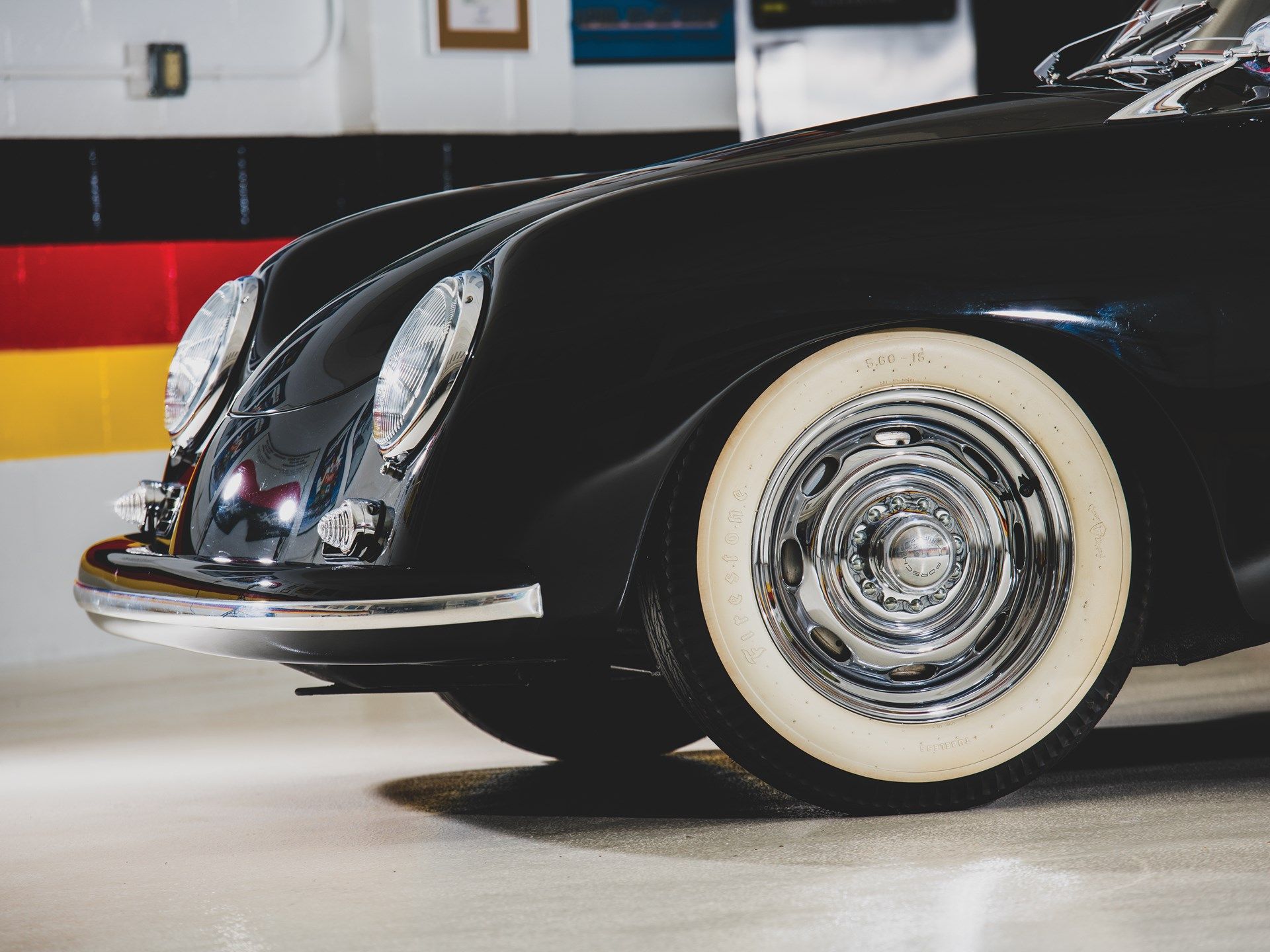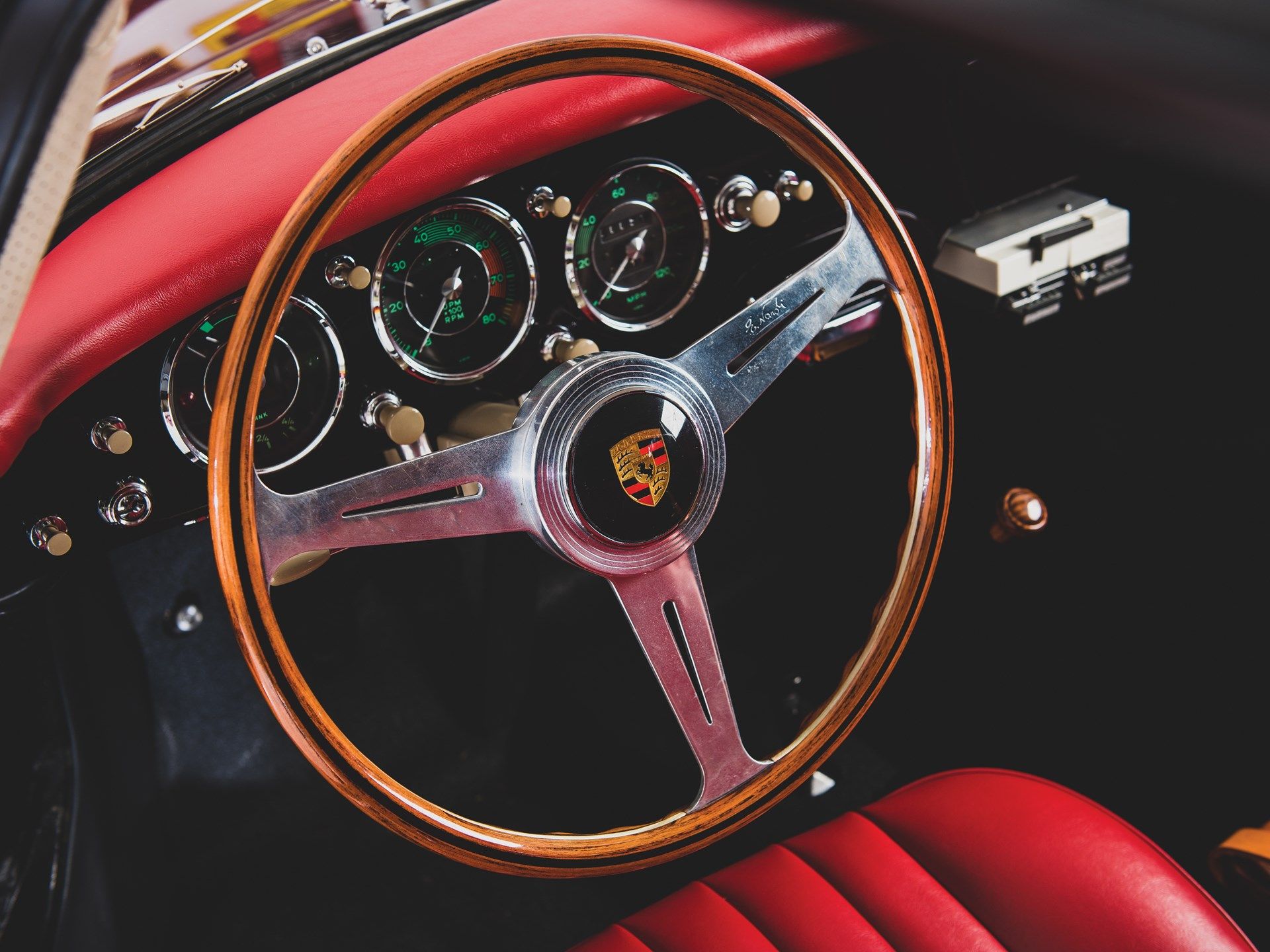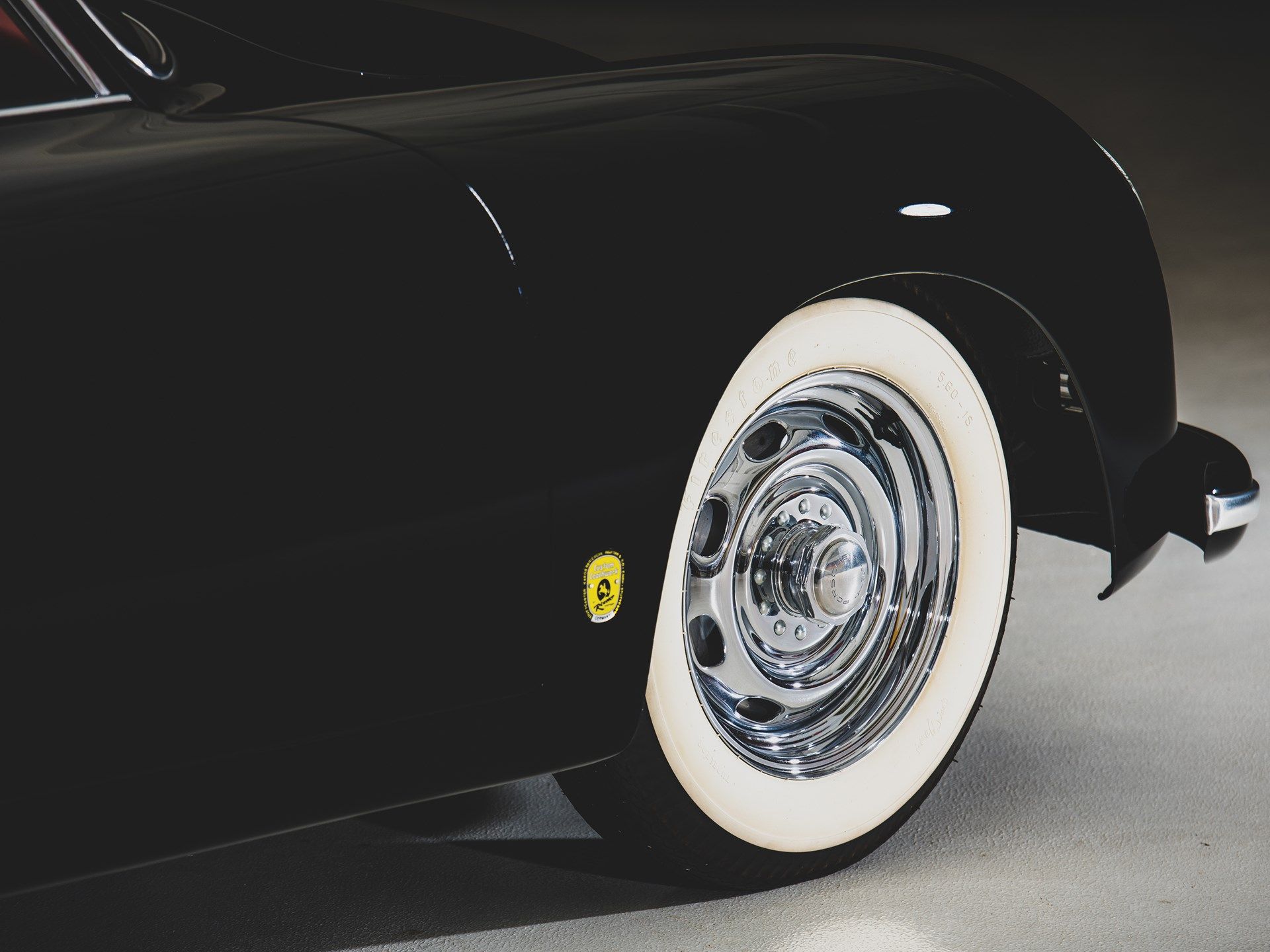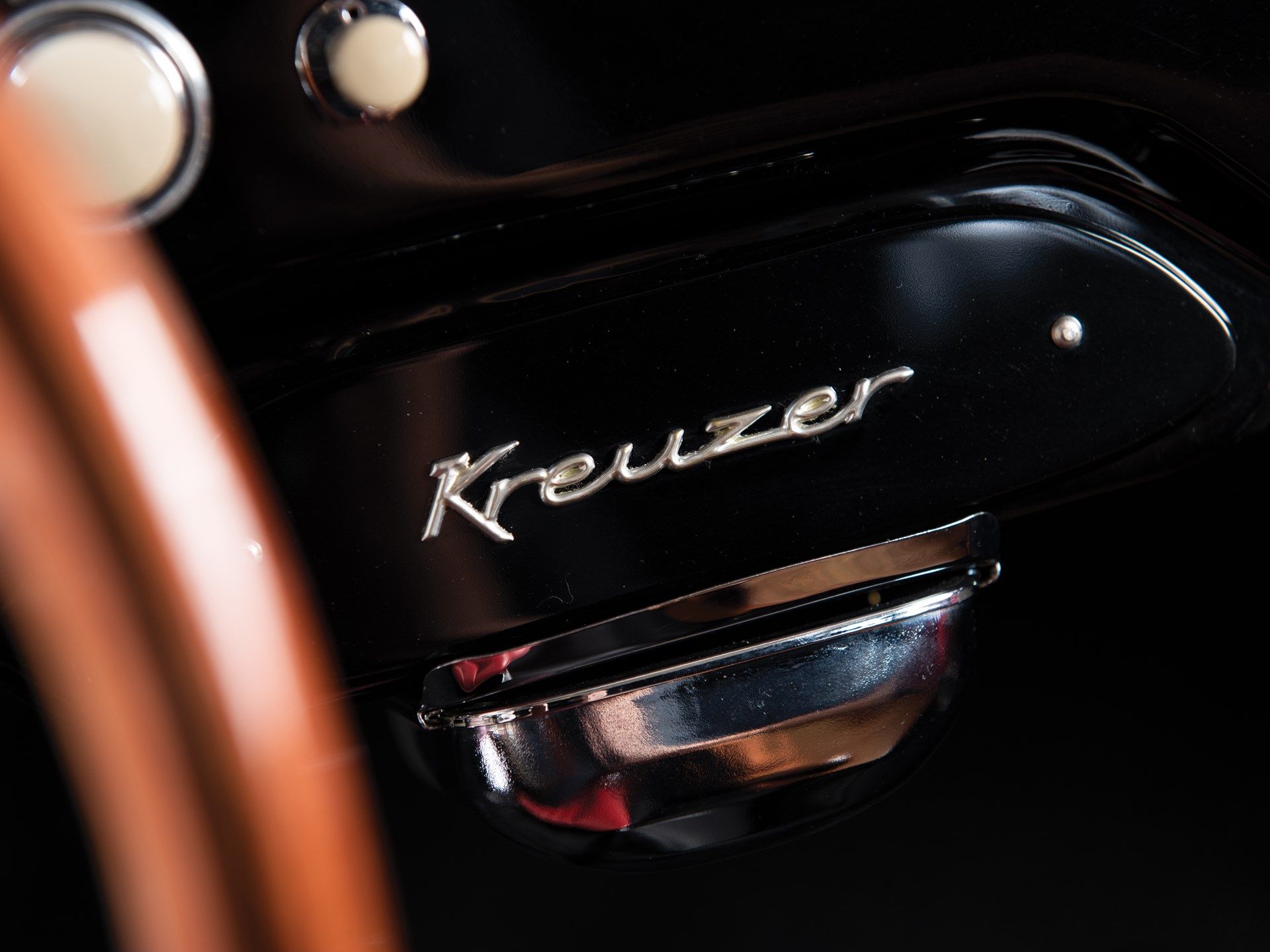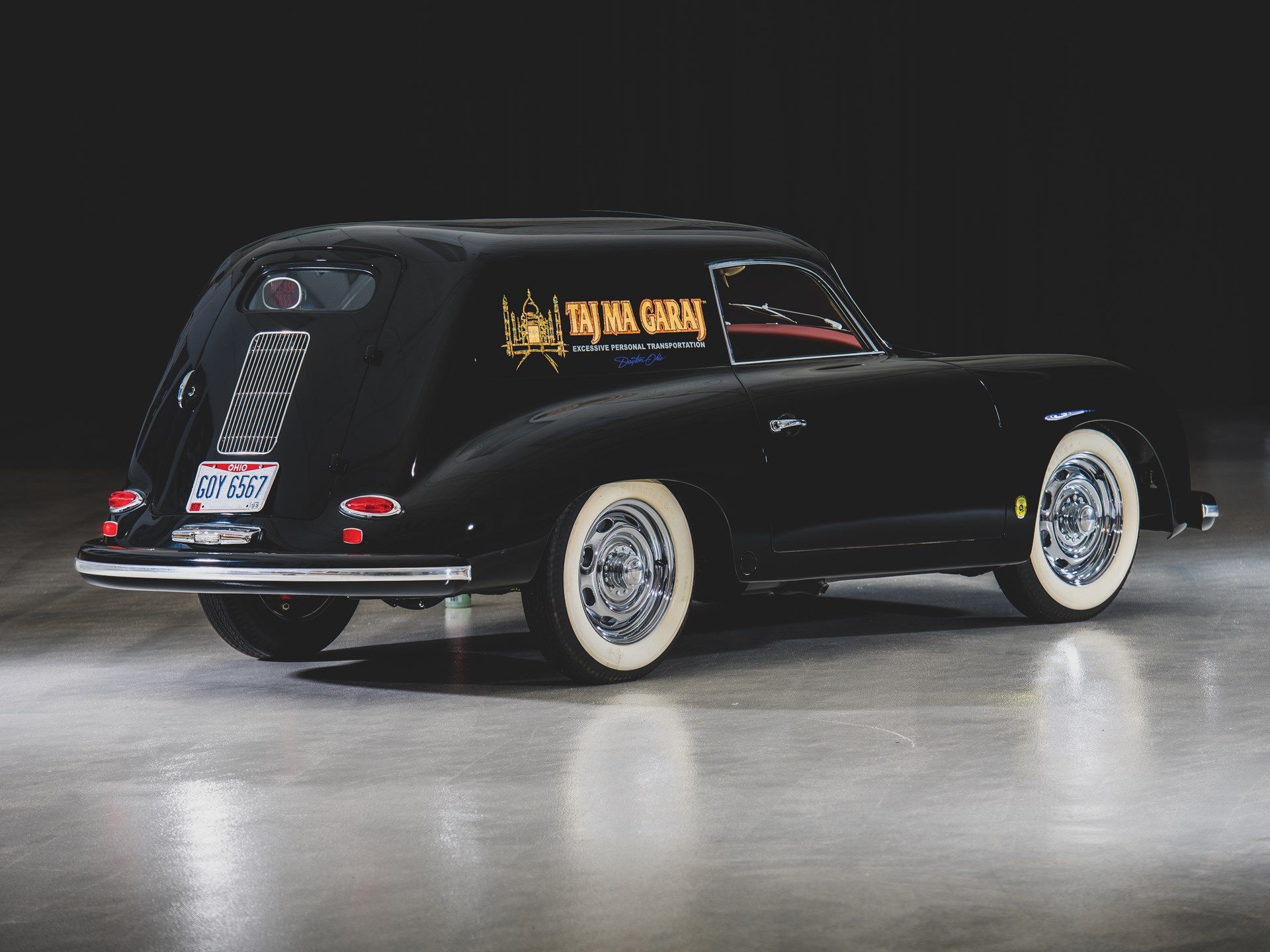Remember the days of the compact but practical delivery wagons based on your average car? Stuff like the Pontiac Pathfinder or Ford Courier in wagon form with no rear windows and truck-like doors in the back for easy access to the cargo area. Known as sedan delivery vehicles, they stopped being popular over half a century ago but, even in their heyday, no small business owner dreamt of owning something like this. But Jon Dixon did and this is the fruit of that dream, the Porsche 356 A Sedan Delivery 'Kreuzer', a car to annoy the purists and bring a smile to the faces of those that like to see tasteful and unconventional builds strive to exist in a world of uniform tastes.
The Porsche 356 was the first car built by the factory after the war, first at Gmund, in Austria, then at Porsche's original home in Zuffenhausen, near Stuttgart, from 1950 onwards. The 356 A arrived in late 1955 as a 1956 year model and replaced what's now known as the 356 Pre-A, or the first 356s to be built in Germany with steel bodies (because Reutter Karosserie that handled body construction didn't have the know-how to weld light-alloy body parts like those of the 356/2 examples made in Gmund). The 'Kreuzer' is, at heart, a 1958 Porsche 356A Speedster so you can imagine how much work went into getting it to look as it does today.
This is the Porsche 356 version that Porsche never made but totally should have
In June, we heard that John Dixon's extensive collection of cars is set to go under the hammer during a one-day RM/Sotheby's auction. The site of the auction, that's scheduled for September 28th, is Dixon's own heaven on Earth, the Taj Ma Garaj, an eclectic 23,000 square-foot event venue in Dayton, Ohio, that hosted parties, corporate events, or celebrations from time to time and Porsche and Volkswagen cars and memorabilia all the time.
Dixon, who passed away in 2013 at the age of 60 after a short battle with cancer, became a Porsche fan the day a sports car built near Stuttgart passed him on the road while he was pedaling his muscle cars. Fascinated by the rear-engined machine, he gathered enough money to buy himself one merely a year later and one thing led to another and, now, many decades later, RM/Sotheby's catalog for the upcoming sale features some 350 items including treasured books, parts, posters, and other automotive artifacts. ''
The auction is, however, an opportunity for us to revisit some of the coolest and most interesting cars in the collection. Today, we'll focus on a utilitarian Porsche. If this idea contradicts whatever you associate Porsche with inside your head, then that's good, that's probably what John wanted to do as well - to make people gasp and let a WTF slip under their breaths.
Little over 20,000 of the grand total of 76,000 356s ever made were A-type models built between late 1955 and 1959. The 356A was introduced at the Frankfurt Show, in September of 1955, and production commenced quickly.
Throughout its short life, the 356A was made available with a choice of five flat-four engines: the 356A 1300 with 44 horsepower, the 356A 1300 Super with 20 more horsepower, the 356 1600 also with 60 ponies, the 356A 1600 Super with 75 horsepower (the most power available from the biggest pushrod engine that Porsche offered at the time), and, finally, the now-well-known 1.5-liter, DOHC Carrera engine that was fitted in the back of the 356A 1500 GS Carrera and put out 100 horsepower. The chassis was updated to cope with the added power, suspension travel was increased, while the ride was, overall, smoother than ever before also due to repositioned shock absorbers.
The many changes prompted Road & Track to state at the time that the 356A provides "an impressive combination of control and true riding comfort. The inbuilt oversteer, an old story to those who know Porsches well, can still make the novice a little jumpy until he is sure just what the car is going to do. Then he will find himself hunting up sharp curves for the sheer pleasure of being in control of so exceptionally maneuverable a car." As an extra side note, the 356A carried over the front anti-roll bars introduced in the latter Pre-A examples and the caster was doubled.
John effectively saved the car as the body was about to be scrapped for good while most other components were already taken off the derelict shell. Given the sorry state of the car, Dixon decided to re-body it and give it a Breadvan-esque appearance by adding a fixed roof that stretched all the way back to where the engine cover would curve down to mee the rear apron. The long roof means that, in the back, there's no longer a small lid, but rather a tall door. Sadly, the 356A Sedan Delivery isn't a particularly practical runabout despite its utilitarian looks. In fact, you don't even get two full seats inside.
While the driver's seat is fully upholstered in beautiful red leather - just like the top of the dash and the interior door panels, the fold-flat wicker passenger seat seems to have not been designed to take in a fully grown human and, instead, is probably to just be the place to store a basket or, maybe, you could just leave it folded and carry longer objects in the back, in front of the engine.
From the outside, the car looks stunning. Painted in black, it runs on whitewall tires that wrap neatly around beautifully chromed hubcaps. The rims themselves are seemingly larger than the standard ones (maybe 16-inchers) and the bumpers are simple, without the supplementary curved bar seen on the Cabriolet and the Coupe. As a 1958 MY car should have, 'The Kreuzer' comes with number plate lighting in the chrome housing below the number plate.
While the engine offers a highly enjoyable and throaty soundtrack, a sign in the window that says 'Please Pass' in red lettering makes you think these cars weren't really the beasts that are modern Porsches.
What else is in the Taj Ma Garaj?
In much the same way the Taj Mahal was built to house the tomb of Mumtaz Mahal, the favorite wife of Mughal emperor, Shah Jahan, the Taj Ma Garaj was a place for John Dixon to house the cars he loved the most. As mentioned, not all of them are in showroom stock condition and, actually, quite a few may not rock everyone's boat. If you didn't like 'The Kreuzer' with its cheeky 'Excessive Personal Transportation' message on its sides, you'll probably not like another even more publicized car that's part of the collection.
I'm talking, of course, the white Porsche 356 Limo. Based, incredibly, on the lengthened chassis from a 1953 Pre-A model, the stretch was apparently commissioned by Dixon on the occasion of his daughter's marriage. The conversion was carried out by Don Boeke of Egyptian Custom Body in Dayton, Ohio, and the result is, again, stunning in its quality.
The car is lowered, of course, and there are some really chic sort-of-period-correct touches made on the outside like the turbine rings around the wheels, the pre-A louvered rear sunshade, and even B-pillar-mounted semaphore turn signals are present. The soft-top sunroof in the back was sourced from a Volkswagen and the car now features suicide doors for easier access.
The interior is finished in beautiful beige leather while the metal dash is painted in white. There's no radio and the steering wheel is also beige to match the upholstery on the two individual bucket seats and the interior door panels. In the back, there's room for two more people on the bench seat that features individual backrests. There's also room for luggage in the back behind the bench seat near the firewall that separates the cabin from the engine compartment where you'll now find an air-cooled flat-four from a Porsche 912.
While it looks stunning to us, many Porscheophiles would stay well clear of it and that's why RM/Sotheby's reckons it won't fetch more than $280,000 - a bargain, as far as we're concerned, since we're talking about a rare Pre-A base that now supports a one-of-a-kind body and interior. Yes, it's not everyone's cup of tea, but this is what makes it special - same for 'The Kreutzer'!
Further reading
Read our full review on the 1958 Porsche 356 A 1500 GS/GT Carrera Speedster
Car For Sale: 1939 Porsche Type 64
Read our full review on the 1948-1965 Porsche 356

